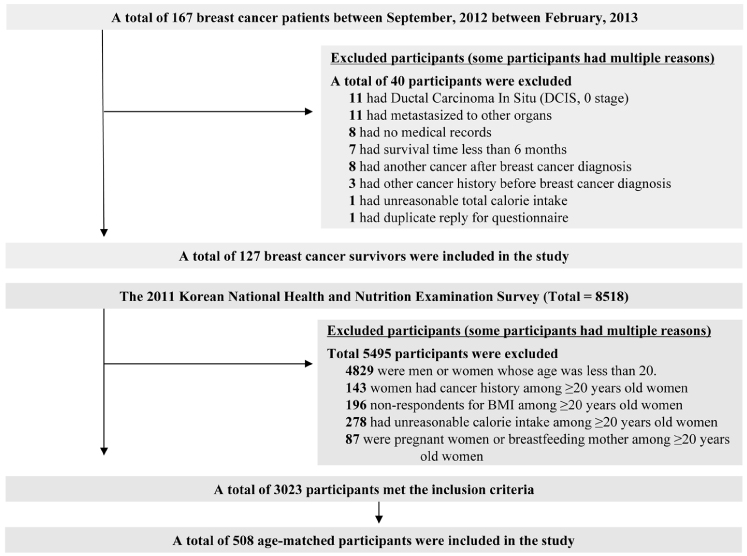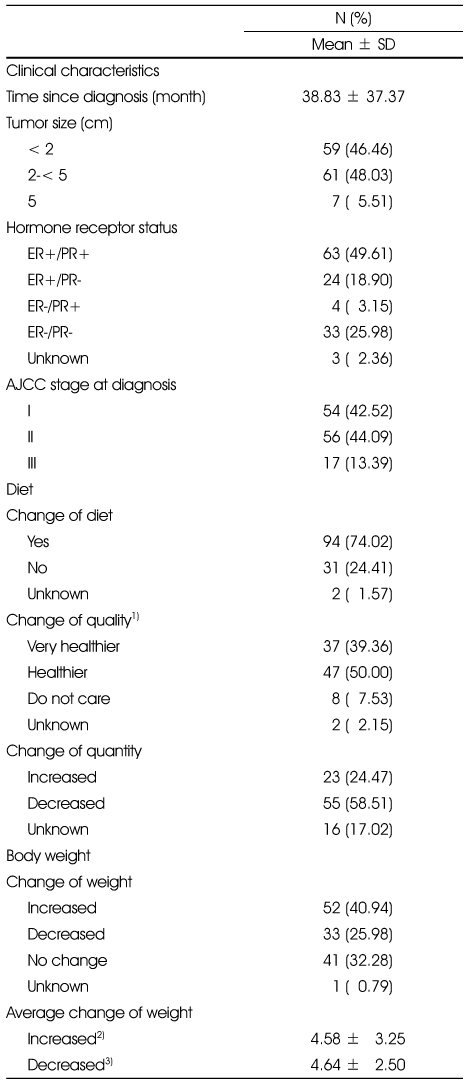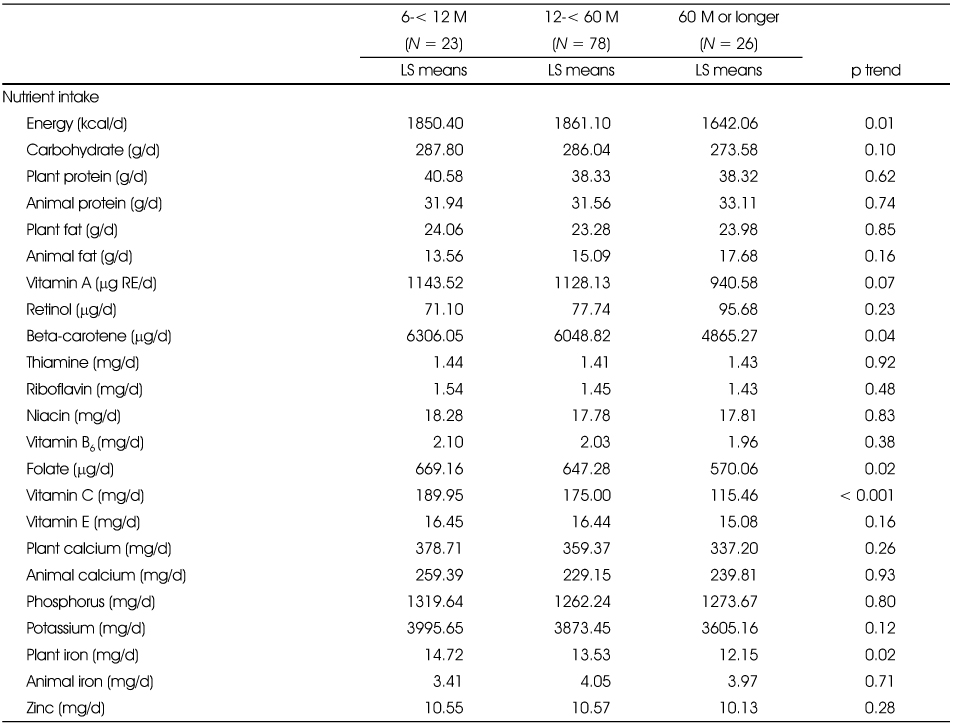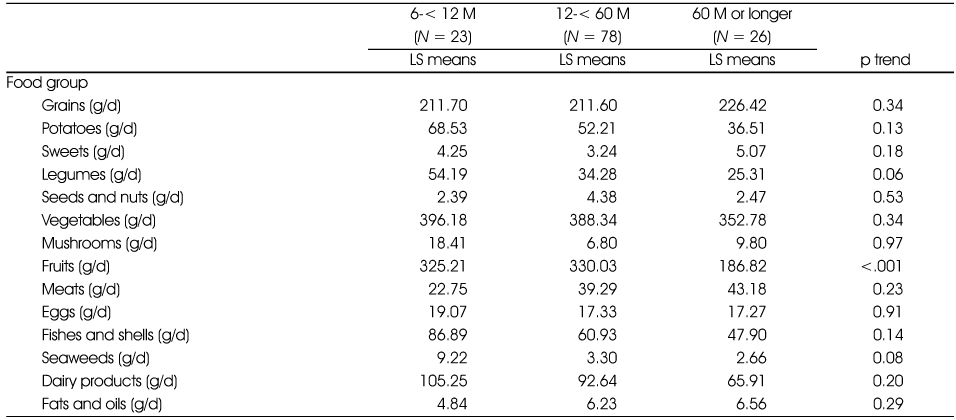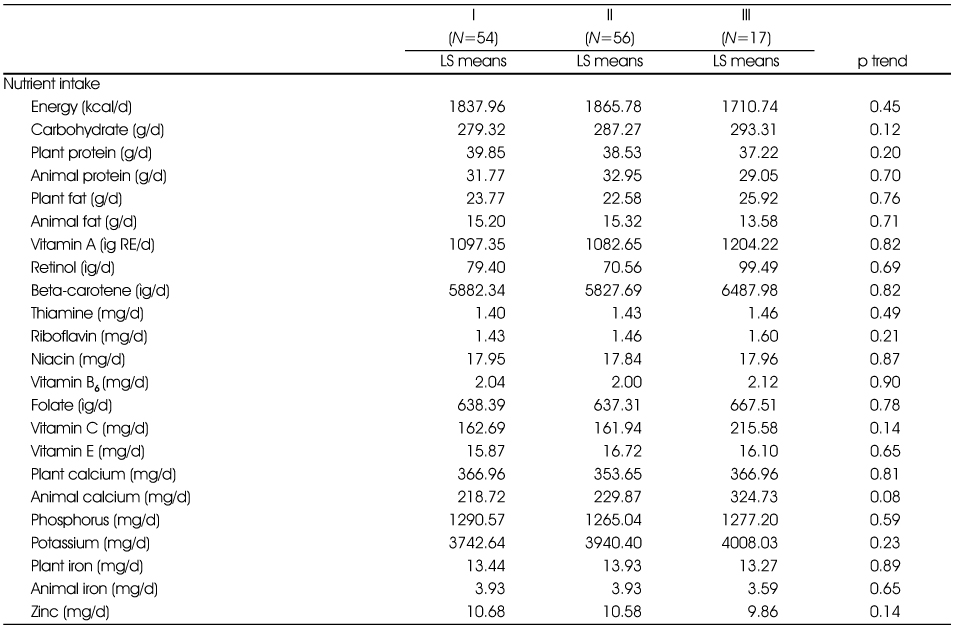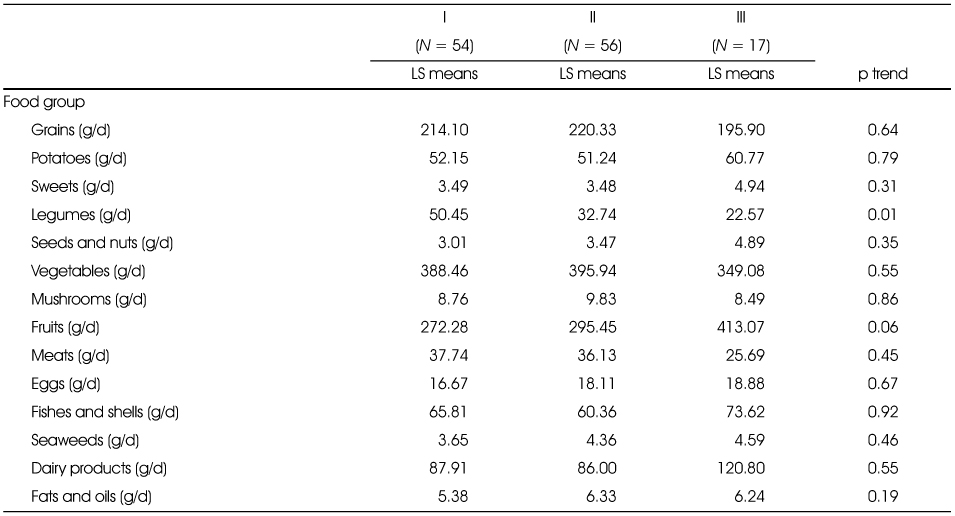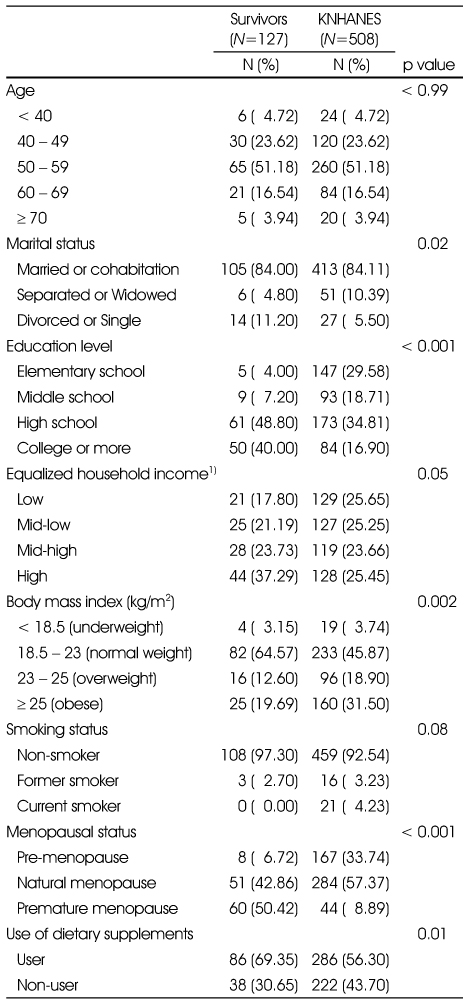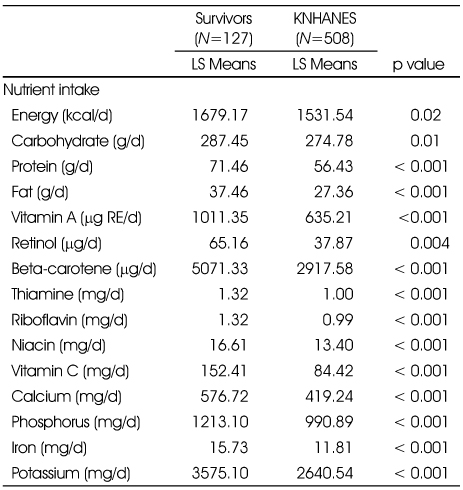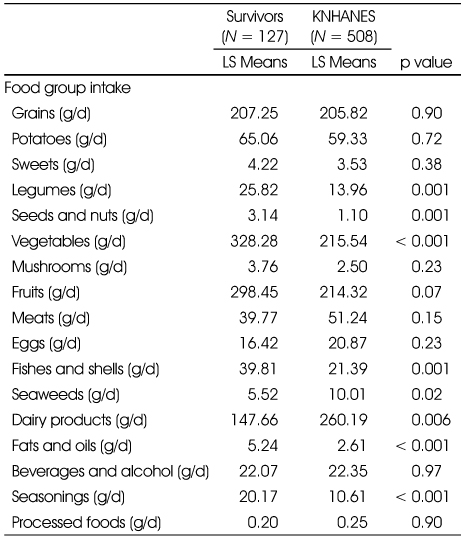References
1. Barrera R. Nutritional support in cancer patients. JPEN J Parenter Enteral Nutr 2002;265 suppl. :S63–S71.
2. Beasley JM, Newcomb PA, Trentham-Dietz A, Hampton JM, Bersch AJ, Passarelli MN, Holick CN, Titus-Ernstoff L, Egan KM, Holmes MD, Willett WC. Post-diagnosis dietary factors and survival after invasive breast cancer. Breast Cancer Res Treat 2011;128(1):229–236.
3. Belle FN, Kampman E, McTiernan A, Bernstein L, Baumgartner K, Baumgartner R, Ambs A, Ballard-Barbash R, Neuhouser ML. Dietary fiber, carbohydrates, glycemic index, and glycemic load in relation to breast cancer prognosis in the heal cohort. Cancer Epidemiol Biomarkers Prev 2011;20(5):890–899.
4. Bozzetti F, Migliavacca S, Scotti A, Bonalumi M, Scarpa D, Baticci F, Ammatuna M, Pupa A, Terno G, Sequeira C. Impact of cancer, type, site, stage and treatment on the nutritional status of patients. Ann Surg 1982;196(2):170.
5. Brown J, Byers T, Thompson K, Eldridge B, Doyle C, Williams AM. Nutrition during and after cancer treatment: a guide for informed choices by cancer survivors. CA Cancer J Clin 2001;51(3):153–181.
6. Carey LA, Perou CM, Livasy CA, Dressler LG, Cowan D, Conway K, Karaca G, Troester MA, Tse CK, Edmiston S. Race, breast cancer subtypes, and survival in the carolina breast cancer study. JAMA 2006;295(21):2492–2502.
7. Chlebowski RT, Blackburn GL, Thomson CA, Nixon DW, Shapiro A, Hoy MK, Goodman MT, Giuliano AE, Karanja N, McAndrew P, Hudis C, Butler J, Merkel D, Kristal A, Caan B, Michaelson R, Vinciguerra V, Del Prete S, Winkler M, Hall R, Simon M, Winters BL, Elashoff RM. Dietary fat reduction and breast cancer outcome: interim efficacy results from the women's intervention nutrition study. J Natl Cancer Inst 2006;98(24):1767–1776.
8. Clemons M, Goss P. Estrogen and the risk of breast cancer. N Engl J Med 2001;344(4):276–285.
9. Demark-Wahnefried W, Hars V, Conaway MR, Havlin K, Rimer B, McElveen G, Winer E. Reduced rates of metabolism and decreased physical activity in breast cancer patients receiving adjuvant chemotherapy. Am J Clin Nutr 1997;65(5):1495–1501.
10. Dong JY, Qin LQ. Soy isoflavones consumption and risk of breast cancer incidence or recurrence: a meta-analysis of prospective studies. Breast Cancer Res Treat 2011;125(2):315–323.
12. Goodwin PJ, Ennis M, Pritchard KI, Trudeau M, Hood N. Risk of menopause during the first year after breast cancer diagnosis. J Clin Oncol 1999;17(8):2365–2365.
13. Grindel C, Cahill C, Walker M. Food intake of women with breast cancer during their first six month of chemotherapy. Oncol Nurs Forum 1989;16(3):401–407.
14. Hunter DJ, Spiegelman D, Adami HO, Beeson L, van den Brandt PA, Folsom AR, Fraser GE, Goldbohm RA, Graham S, Howe GR. Cohort studies of fat intake and the risk of breast cancer-a pooled analysis. N Engl J Med 1996;334(6):356–361.
15. Jung KW, Won YJ, Kong HJ, Oh CM, Seo HG, Lee JS. Cancer statistics in Korea: incidence, mortality, survival and prevalence in 2010. Cancer Res Treat 2013;45(1):1–14.
17. Kroenke CH, Fung TT, Hu FB, Holmes MD. Dietary patterns and survival after breast cancer diagnosis. J Clin Oncol 2005;23(36):9295–9303.
18. Kroenke CH, Kwan ML, Sweeney C, Castillo A, Caan BJ. High- and low-fat dairy intake, recurrence, and mortality after breast cancer diagnosis. J Natl Cancer Inst 2013;105(9):616–623.
19. Kuiper GG, Lemmen JG, Carlsson B, Corton JC, Safe SH, van der Saag PT, van der Burg B, Gustafsson JA. Interaction of estrogenic chemicals and phytoestrogens with estrogen receptor beta. Endocrinology 1998;139(10):4252–4263.
20. Kwan ML, Weltzien E, Kushi LH, Castillo A, Slattery ML, Caan BJ. Dietary patterns and breast cancer recurrence and survival among women with early-stage breast cancer. J Clin Oncol 2009;27(6):919–926.
21. Maskarinec G, Murphy S, Shumay D, Kakai H. Dietary changes among cancer survivors. Eur J Cancer Care (Engl) 2001;10(1):12–20.
22. Maunsell E, Drolet M, Brisson J, Robert J, Deschênes L. Dietary change after breast cancer: Extent, predictors, and relation with psychological distress. J Clin Oncol 2002;20(4):1017–1025.
23. Messina MJ, Loprinzi CL. Soy for breast cancer survivors: a critical review of the literature. J Nutr 2001;13111 Suppl. :3095S–3108S.
24. Nechuta SJ, Caan BJ, Chen WY, Lu W, Chen Z, Kwan ML, Flatt SW, Zheng Y, Zheng W, Pierce JP, Shu XO. Soy food intake after diagnosis of breast cancer and survival: an in-depth analysis of combined evidence from cohort studies of US and Chinese women. Am J Clin Nutr 2012;96(1):123–132.
25. Patterson RE, Neuhouser ML, Hedderson MM, Schwartz SM, Standish LJ, Bowen DJ. Changes in diet, physical activity, and supplement use among adults diagnosed with cancer. J Am Diet Assoc 2003;103(3):323–328.
26. Patterson RE, Flatt SW, Newman VA, Natarajan L, Rock CL, Thomson CA, Caan BJ, Parker BA, Pierce JP. Marine fatty acid intake is associated with breast cancer prognosis. J Nutr 2011;141(2):201–206.
27. Rock CL, Doyle C, Demark-Wahnefried W, Meyerhardt J, Courneya KS, Schwartz AL, Bandera EV, Hamilton KK, Grant B, McCullough M. Nutrition and physical activity guidelines for cancer survivors. CA Cancer J Clin 2012;62(4):243–274.
28. Skeie G, Hjårtaker A, Lund E. Diet among breast cancer survivors and healthy women. the norwegian women and cancer study. Eur J Clin Nutr 2006;60(9):1046–1054.
29. Skeie G, Hjartåker A, Braaten T, Lunc E. Dietary change among breast and colorectal cancer survivors and cancer-free women in the norwegian women and cancer cohort study. Cancer Causes Control 2009;20(10):1955–1966.
30. The Korean Nutrition Society. Dietary reference intakes for Koreans (DRIs for Koreans) 2010.
31. Velentzis LS, Keshtgar MR, Woodside JV, Leathem AJ, Titcomb A, Perkins KA, Mazurowska M, Anderson V, Wardell K, Cantwell MM. Significant changes in dietary intake and supplement use after breast cancer diagnosis in a uk multicentre study. Breast Cancer Res Treat 2011;128(2):473–482.
32. Vrieling A, Buck K, Seibold P, Heinz J, Obi N, Flesch-Janys D, Chang-Claude J. Dietary patterns and survival in German postmenopausal breast cancer survivors. Br J Cancer 2013;108(1):188–192.
33. Willett WC, Stampfer MJ. Total energy intake: implications for epidemiologic analyses. Am J Epidemiol 1986;124(1):17–27.
34. Willett WC, Hunter DJ, Stampfer MJ, Colditz G, Manson JE, Spiegelman D, Rosner B, Hennekens CH, Speizer FE. Dietary fat and fiber in relation to risk of breast cancer. JAMA 1992;268(15):2037–2044.
